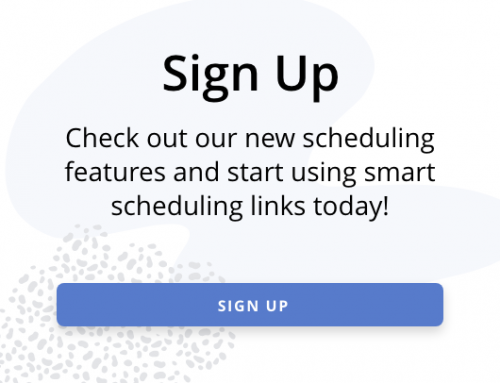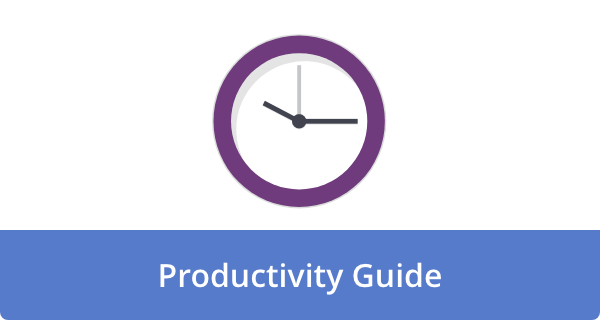

As a startup founder, time is your most valuable and limited resource. You’re wearing like ten hats, avoiding distractions, and trying to fit 80 hours of work into a 40-hour week — if you’re lucky.
The result? Continuous context switching, interrupted focus, reactive decision-making, and an ever-growing to-do list. However, there is a simple habit that can bring order to that chaos — and it’s not working for long hours.
We call it time-blocking. And, for startup founders, it’s the closest thing to possessing a superpower.
What Is Time-Blocking?
Cal Newport, the author of Deep Work, popularized time-blocking as the practice of dividing your day into blocks of time for specific tasks. By assigning intentional chunks of your calendar to deep work, meetings, email, admin, breaks, and even thinking, you avoid keeping a loose to-do list.
It’s like budgeting your startup’s money proactively and with purpose.
Why Founders Need Time-Blocking More Than Anyone
Founders are especially susceptible to time drift. Your entire day can be disrupted by an unexpected investor call or putting out a fire in the engineering department. As early-stage teams are lean, founders often bounce between high-level strategy and low-level execution. The result of that kind of mental whiplash is decision fatigue and mediocre performance.
For founders, time-blocking works because;
- Context switching is reduced. Productivity and creativity can be killed by content switching.
- It prevents time from being wasted on low-value tasks. Instead, you can focus on product vision or customer discovery.
- It ensures that urgent doesn’t always win over important.
- You can focus on one thing at a time, creating psychological safety.
And best of all? It doesn’t take three hours to see results. With consistent use, even a 15-minute focus session can make a world of difference.
The 15-Minute Block: Your Secret Weapon
Why 15 minutes?
Most founders rarely have long stretches of uninterrupted time. There’s a good chance that your calendar looks like a Tetris game. Almost always, however, you can find 15 minutes between meetings or calls.
They can be used as follows;
- Rather than winging it before important meetings, prepare 15 minutes in advance.
- Every other day, spend 15 minutes reviewing KPIs or analytics.
- Take 15 minutes to reflect on customer feedback, brainstorm new product ideas, or revisit your roadmap.
- To avoid having to redo tasks later, use 15 minutes to delegate.
It’s important to treat those blocks as sacred appointments with yourself.
How to Start Time-Blocking (Without Overcomplicating It)
You don’t need a color-coded masterpiece to start. Just follow these simple steps:
Use a default weekly template to get started.
Sketch rough blocks for the following before the week begins:
- Deep work, like coding, writing, or designing.
- Meetings — limit them where possible.
- Admin tasks include email or Slack responses and approvals.
- Buffer time for the fires that will inevitably pop up.
To time block your schedule, you can create a template in your current calendar app. Time blocking tools, however, make the process a lot simpler.
Protect your mornings.
In most cases, your brain is sharpest during the first three to four hours of the day. As such, spend that time building, thinking, and strategizing. When possible, move meetings to the afternoon.
Use time blocks, not task lists.
When responding to investor emails, for example, say “I will respond between 2:00 p.m. and 2:30 p.m.” This mental shift avoids procrastination and makes your workload seem more manageable.
Include transition and buffer time.
Don’t pack your day with back-to-back activities. Whenever possible, leave 15-minute buffers between meetings or tasks to rest and regroup. By doing this, one delay won’t affect your entire day.
Review and refine weekly.
Time-blocking isn’t static. Every Sunday, spend 30 minutes reflecting on what worked. What didn’t? Where did unplanned work creep in? After this reflection, adjust accordingly.
Time-Blocking in Action: A Sample Founder Schedule
Here’s what a time-blocked day might look like for a SaaS startup founder;
| Time | Block |
| 7:30–8:00 | Morning planning + journaling |
| 8:00–9:30 | Deep work: product roadmap update |
| 9:30–10:00 | Standup with the dev team |
| 10:00–10:15 | Break |
| 10:15–11:00 | Deep work: investor deck revisions |
| 11:00–12:00 | Prospect calls |
| 12:00–1:00 | Lunch + inbox zero |
| 1:00–2:00 | Customer success strategy session |
| 2:00–2:30 | Admin + quick Slack replies |
| 2:30–3:00 | Buffer/catch-up |
| 3:00–4:00 | Deep work: performance metrics |
| 4:00–5:00 | Team one-on-ones |
| 5:00–5:15 | Wrap-up + next day planning |
Notice the structure: deep work early, meetings clustered, admin batched, and enough white space to absorb surprises.
But What If I Can’t Stick to the Blocks?
The goal of time-blocking isn’t perfection. It’s about being intentional. It’s okay if your plan gets blown up. At least you had a plan. Eventually, you will be able to predict task lengths better and recognize patterns that cause your schedule to fall behind.
The value of time-blocking lies in clarity, not rigidity. As a result, you can distinguish between work that moves the needle and work that just makes you feel busy.
Use Tools That Make It Easier (Not Harder)
Time-blocking works best with the right tools. The reason? You can adapt the habit to your own work style and stick with it.
The following tools help founders smooth out time-blocking;
- Calendar. With Calendar, founders can manage external meetings with a combined calendar view and smart meeting scheduler, helping to maximize internal focus and external collaboration. With shareable booking links, analytics, and AI-suggested times, coordination is fast and easy.
- Google Calendar. When it comes to time-blocking, Google Calendar is a reliable and accessible place to start. You can color-code events to segment different work types, set recurring time blocks, and integrate it with your favorite productivity app.
- Motion. For those who want their calendars automatically organized according to urgency, deadlines, and availability, Motion does the time-blocking for them. In real time, it reorganizes your day, ideal for fast-paced founders with constantly changing priorities.
- Sunsama. Using this daily planning tool, you can reflect on what’s important to you. For founders seeking better work-life balance, it provides a visual approach to time-blocking along with integrations with Asana, Trello, and Notion.
- Morgen. Whether you are working with remote teams or running a distributed startup, Morgen emphasizes calendar transparency across time zones. It’s easy to overlay multiple calendars, share availability, and block deep work time in a way that everyone can see.
Every founder has their own needs. However, you should choose a tool you are likely to use consistently. No matter what type of time-blocking tool you’re looking for, there’s one that will fit your needs and style.
Final Thought: Structure Creates Freedom
The startup life is messy. However, that doesn’t mean your schedule has to be. Entrepreneurs who excel don’t just hustle; they protect their time. While time-blocking won’t solve every challenge, it will give you a clearer head, better output, and less burnout.
And if you only have 15 minutes? Make the most of it. That’s where real progress begins.
Image Credit: George Becker; Pexels











John Hall
John Hall is the co-founder of Calendar a scheduling and time management app. He’s also a keynote speaker that you can book at http://www.johnhallspeaking.com.